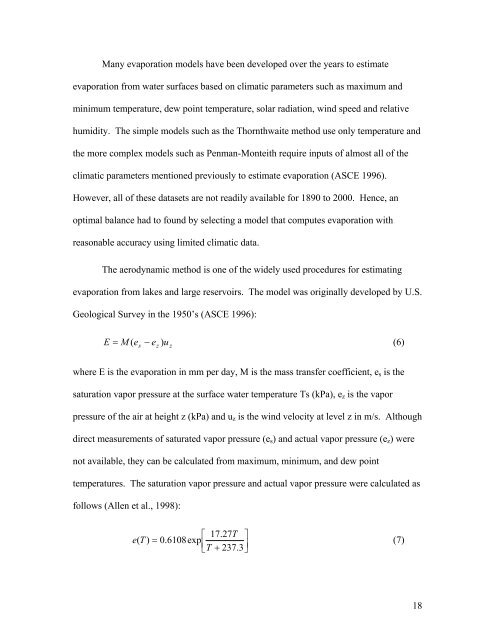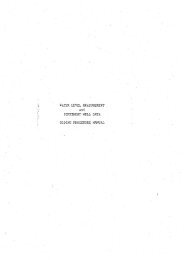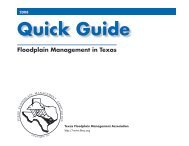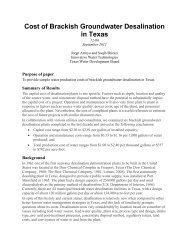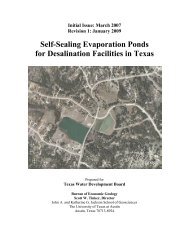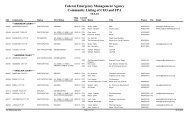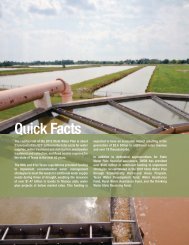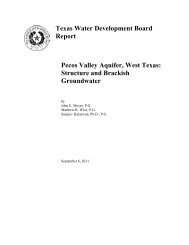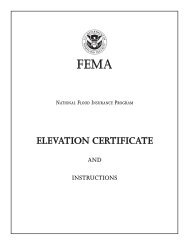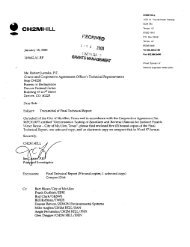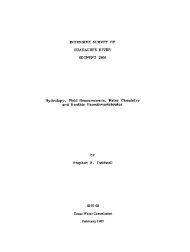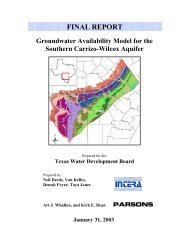Digital Climatic Atlas of Texas - Texas Water Development Board
Digital Climatic Atlas of Texas - Texas Water Development Board
Digital Climatic Atlas of Texas - Texas Water Development Board
You also want an ePaper? Increase the reach of your titles
YUMPU automatically turns print PDFs into web optimized ePapers that Google loves.
Many evaporation models have been developed over the years to estimate<br />
evaporation from water surfaces based on climatic parameters such as maximum and<br />
minimum temperature, dew point temperature, solar radiation, wind speed and relative<br />
humidity. The simple models such as the Thornthwaite method use only temperature and<br />
the more complex models such as Penman-Monteith require inputs <strong>of</strong> almost all <strong>of</strong> the<br />
climatic parameters mentioned previously to estimate evaporation (ASCE 1996).<br />
However, all <strong>of</strong> these datasets are not readily available for 1890 to 2000. Hence, an<br />
optimal balance had to found by selecting a model that computes evaporation with<br />
reasonable accuracy using limited climatic data.<br />
The aerodynamic method is one <strong>of</strong> the widely used procedures for estimating<br />
evaporation from lakes and large reservoirs. The model was originally developed by U.S.<br />
Geological Survey in the 1950’s (ASCE 1996):<br />
E = M ( e − e ) u<br />
(6)<br />
s<br />
z<br />
z<br />
where E is the evaporation in mm per day, M is the mass transfer coefficient, e s is the<br />
saturation vapor pressure at the surface water temperature Ts (kPa), e z is the vapor<br />
pressure <strong>of</strong> the air at height z (kPa) and u z is the wind velocity at level z in m/s. Although<br />
direct measurements <strong>of</strong> saturated vapor pressure (e s ) and actual vapor pressure (e z ) were<br />
not available, they can be calculated from maximum, minimum, and dew point<br />
temperatures. The saturation vapor pressure and actual vapor pressure were calculated as<br />
follows (Allen et al., 1998):<br />
⎡ 17.27T<br />
⎤<br />
e ( T ) = 0.6108exp⎢<br />
⎣T<br />
+ 237.3⎥<br />
(7)<br />
⎦<br />
18


